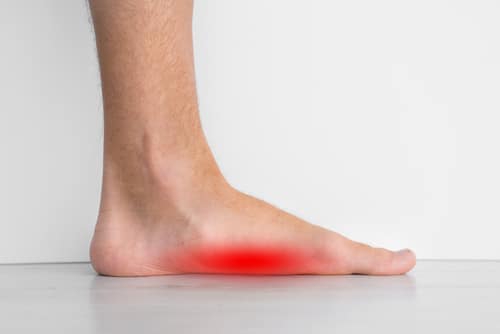Plantar fasciitis is one of the most common causes of heel pain, affecting millions worldwide. It occurs when the plantar fascia, a thick band of tissue connecting your heel to your toes, becomes inflamed or irritated. While this condition can be incredibly frustrating and painful, recognizing its key symptoms can help you take steps toward addressing the discomfort.
What Causes Sharp Heel Pain First Thing in the Morning?
One telltale sign of plantar fasciitis is experiencing a sharp, stabbing pain in the heel when you take your first steps in the morning. You may notice that the discomfort subsides somewhat as your foot “warms up” throughout the day, only to return later after periods of inactivity. This symptom occurs because the plantar fascia contracts and tightens while you rest or sleep. When you stand and put weight on your foot, the sudden stretching of the tightened tissue can cause inflammation and pain. For many people, those first steps each morning may be the most challenging part of the day.
Practical Tips to Ease Morning Heel Pain:
- Before getting out of bed, gently stretch your calf muscles and toes to warm up the plantar fascia.
- Wear supportive footwear, even indoors, to provide cushioning and reduce strain on the heel.
- Using an orthotic insole to help distribute pressure more evenly across your foot may help.
Why Does Your Foot Hurt More After Long Periods of Rest?
Another key symptom of plantar fasciitis is pain that intensifies after long periods of rest or inactivity. Similar to the morning pain described earlier, this occurs because the plantar fascia tightens during inactivity. When you resume activity, the sudden increase in strain can aggravate the inflamed tissue. This pattern of “rest-to-activity” pain can make it difficult to enjoy everyday activities like walking or exercising.
Over time, recurring pain may also lead to changes in your gait. This can potentially cause strain on other parts of your body, such as your knees, hips, or lower back. To reduce pain after rest, take frequent breaks to stretch your feet throughout the day, especially if you sit for long periods. Use a cold compress or ice pack after activity to reduce inflammation and numb sore areas. Avoid going barefoot on hard surfaces and opt for shoes with arch support and cushioning.
How Can You Tell if Heel Pain Is Due to Plantar Fasciitis?
Heel pain can result from several conditions, so it’s key to recognize if plantar fasciitis is the likely culprit. One distinguishing symptom is localized pain at the bottom of the heel, particularly where the plantar fascia attaches to the heel bone. This pain often feels sharp or stabbing after rest and intense or throbbing during prolonged activity.
Plantar fasciitis-related pain usually worsens with repetitive stress, such as walking or running, and tends to improve with rest. It’s relevant to note that ignoring the symptoms of plantar fasciitis may worsen the inflammation over time, potentially leading to chronic pain or complications.
Common Signs That Indicate Plantar Fasciitis:
- A specific area of tenderness at the bottom of the heel
- Changes in pain levels depending on activity or rest
- No signs of swelling or redness (these could point to other conditions like a heel fracture)
If you notice these symptoms, it’s a good idea to monitor their frequency and severity to discuss with a healthcare professional.
Consult a Specialist
If you’ve been struggling with persistent heel pain that aligns with the symptoms of plantar fasciitis, it’s time to take action. Early intervention can prevent further damage and help you regain comfort and mobility. A podiatrist or orthopedic doctor can recommend personalized solutions to alleviate pain and promote healing. Reach out to a specialist to take the first step toward recovery today!

